Philip Roth’s celebrated literary masterpiece, American Pastoral, tells the story of Seymour Levov and his family, second-generation Americans who, with great difficulty, manage to build a respectable position for themselves in U.S. society, embodying the perfect paradigm of the star-spangled dream through successes in sports and business. However, these successes are suddenly disrupted by Seymour’s daughter Merry, who, fascinated by the protests of the 1960s, particularly those against the Vietnam War, becomes politically radicalized to the point of committing a terrorist act: a bomb detonated in a small town, resulting in the death of one person. This dramatic event drags the family from a quiet and satisfying existence-a pastoral one-into a maelstrom of grief, confusion, and disintegration.
A cornerstone of world literature, Roth’s book apparently had no influence on the installation Pastoral, which artist Nico Vascellari has proposed at the Palazzo Reale in Milan, which opened April 1 and will remain open until June 2, 2025. In the texts accompanying the exhibition, in fact, it is explained that the title Pastorale was suggested to the artist by Beethoven’s Sixth Symphony, made between 1807 and 1808, a period when the composer was influenced by his love for a bucolic life spent in the countryside and woods. The reference to an idyllic, Arcadian imagery would thus collide with the formal estate and context in which Vascellari’s site-specific work fits, the splendid Sala delle Cariatidi, which still fiercely shows the damage of the bombing that hit the Palazzo Reale in 1943. Here, under the eyes of mutilated and abraded caryatids, a vast carpet of earth has been spread out, while in the center dominates a large metal body, formed by two overlapping cylinders. At uneven intervals, the silence of the room is shaken by a roar originated by the mechanized sculpture, which simultaneously shoots into the air a large quantity of seeds that spill onto the terrigenous expanse. These should thus transform that desolate landscape into a lush meadow, although a few days before closing time the vegetation seems to have taken root only minimally.
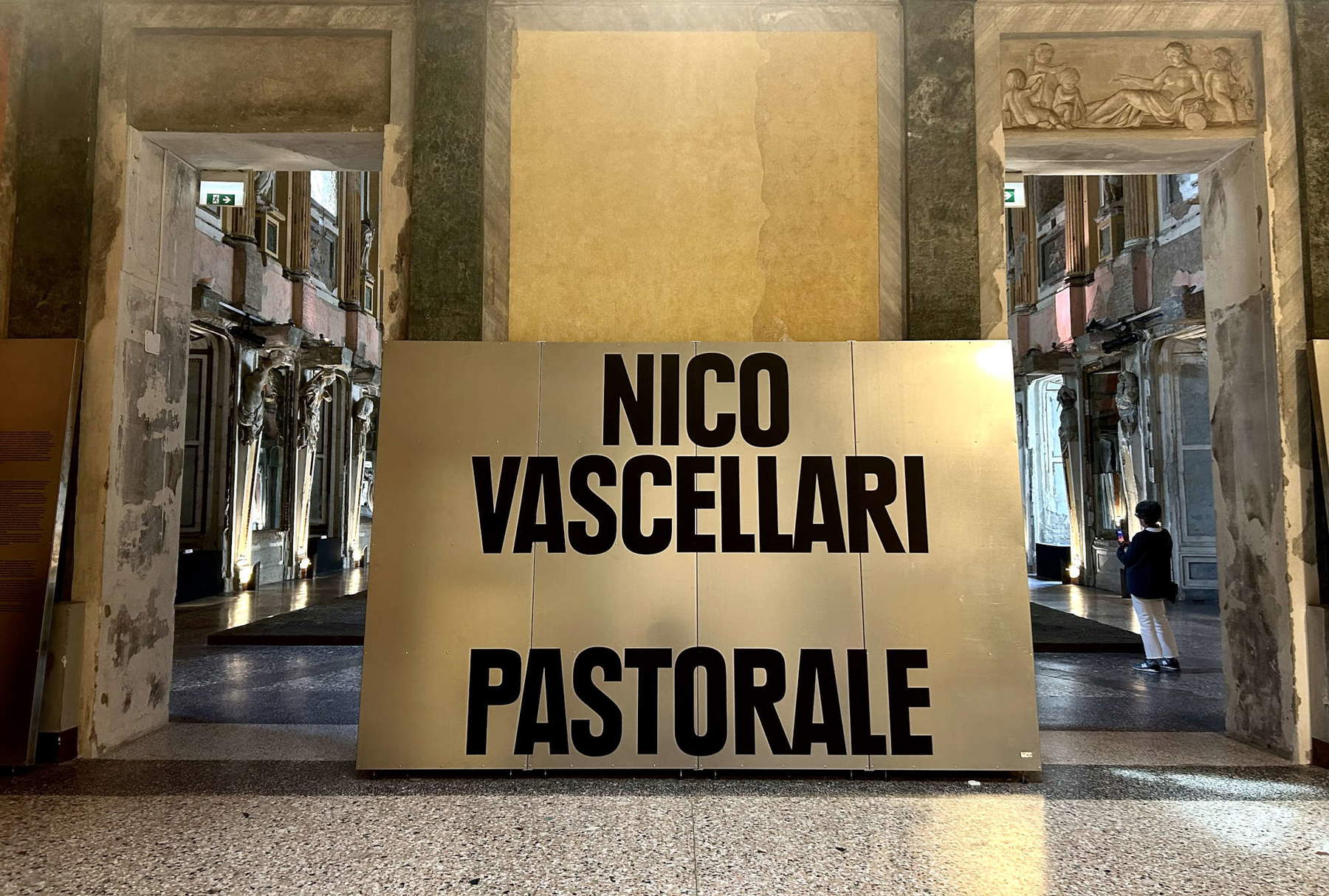
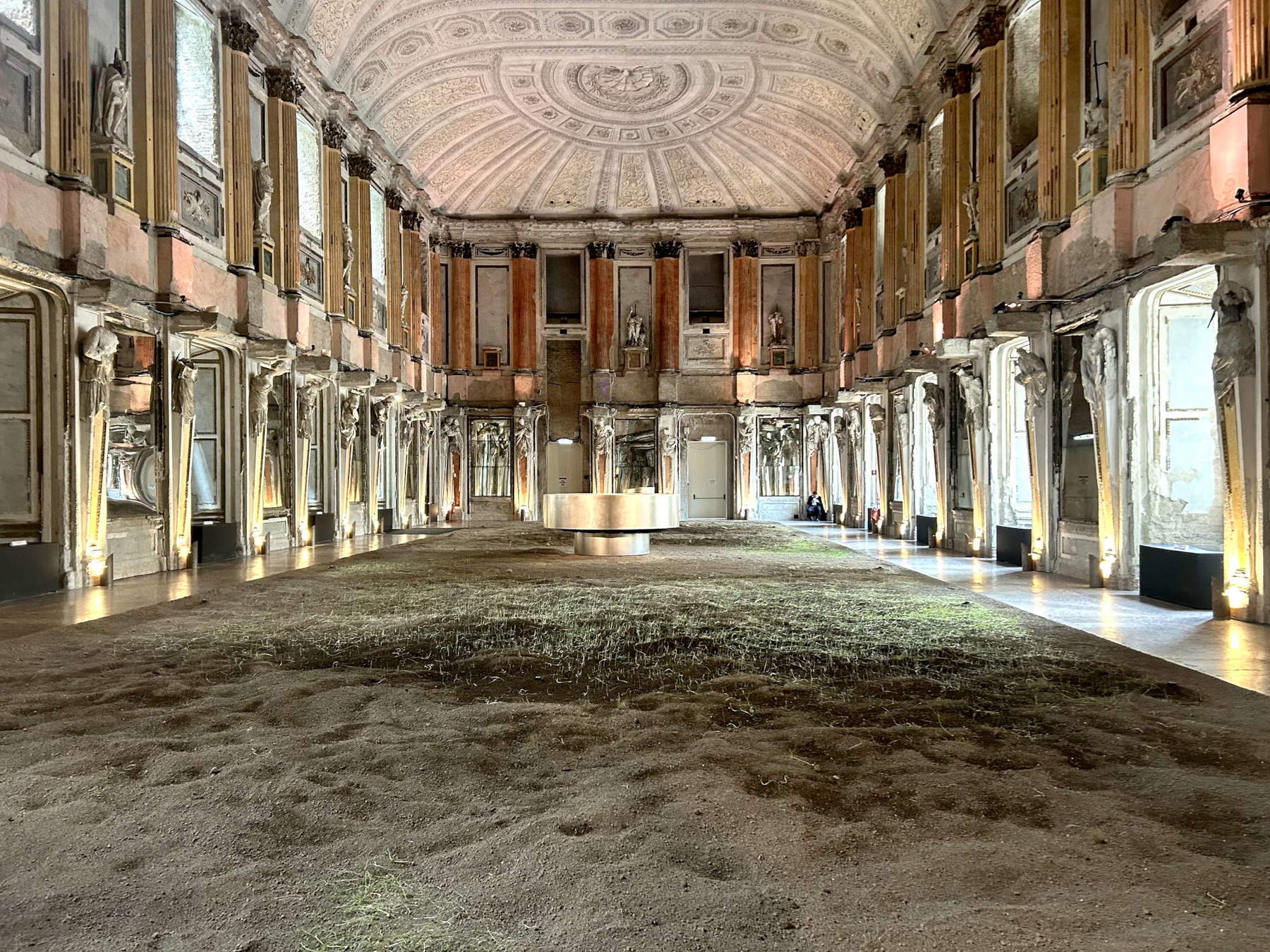
Vascellari would like to evoke a disorienting atmosphere in the neoclassical setting, albeit now a vestige of what once was: the chromed and mechanized body, like an alien or posthuman reality, triggers the cycle of life, which not even in the face of the dramas of war stops. The selected seeds then all belong to weeds, what are generically called weeds and which are daily uprooted from gardens and fields to make way for the selected ones. Pastoral thus becomes in Vascellari’s ideas a “hymn to resistance, for what is uprooted always finds the need to manifest itself.”
To these ambitious intentions fan chorus the words of curator Sergio Risaliti, who has been collaborating with the artist for some time now and who spoke of “radicality” in Vascellari’s work, as well as “the courage to sink into the darkest part of human nature and historical processes.” Not differently, the press also welcomed the intervention in the Sala delle Cariatidi as an emblem of the resilience of human life, which in the face of devastation and war always manages to restart. In short, everyone seems to agree: Vascellari has been able to fit in the Palazzo Reale with a work of great level and deep meanings. You will therefore have to forgive me if my cynicism does not allow me to take part in this praise, if more than the notes of Beethoven’s Pastoral, in front of this operation the words of Roth’s, when he wrote of the “monotonous chanting of the indoctrinated, ideologically armored from head to toe; the monotonous, bamboozling chanting of those whose turbulence can be caged only in the suffocating straitjacket of the most coherent of dreams.” It must certainly be traced to my own limitations the difficulty I have in appreciating Vascellari’s installation, where everything seems to me inferred from a tiredly derivative formal language and content tuned to banal and homologating messages.
One would be inclined to say “nothing new under the sun,” and not even under the LED lights that barely manage to sprout a few blades of grass; the formal tightness of Vascellari’s work moves on the already seen and already said, not unlike certain aesthetic solutions already extensively investigated byarte povera, particularly in the dualism between the aseptic and artificial surfaces of the cylindrical sculpture that dominates instead a carpet of organic and living matter. At the center of this opposition between artificial and natural are numerous historicized works that have already explored the same poetic terrain with depth and effectiveness. Just think of Giovanni Anselmo’s Untitled (Eating Structure) (1968), perhaps his most famous sculpture: two blocks of granite held in tension by the presence of a basket of lettuce, which as it rots interrupts the balance and activates a reflection on the transience of matter and the life cycle. Or Giuseppe Penone’s trees, where the artist “excavates” industrial beams to bring out their vegetal heart, or his iconic It will continue to grow except at that point, where a bronze hand anchored to a tree conditions its growth, thus becoming a physical and symbolic interference in natural processes.
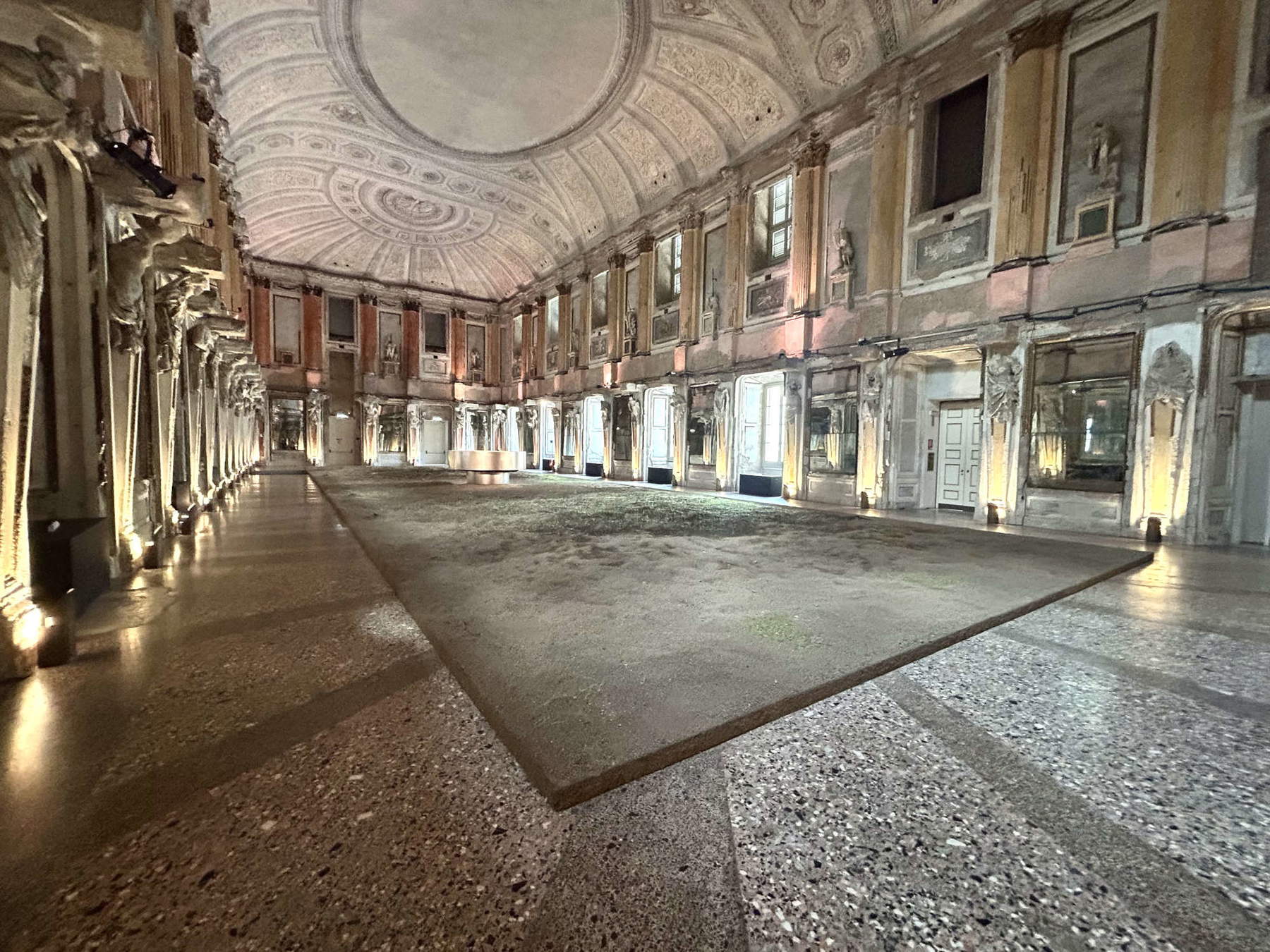
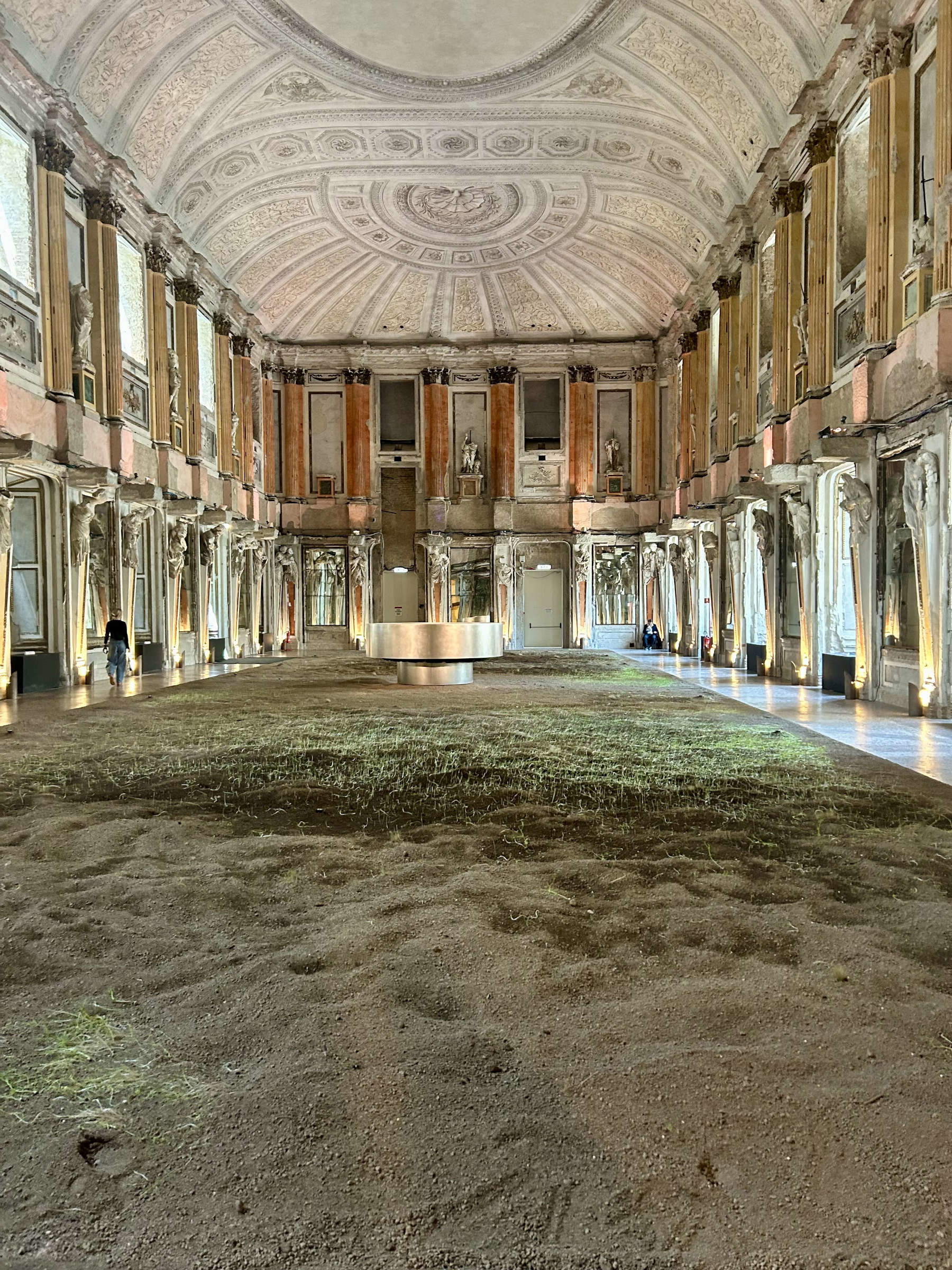
The very idea of bringing fragments of nature back into anthropic and museum contexts is also by no means new. One example is the work of Pierre Huyghe, who builds semi-autonomous ecosystems inhabited by plants, animals and machines, generating hybrid, deeply ambiguous spaces. Similarly, for years Swedish artist Henrik Håkansson has been introducing portions of the living landscape inside museums, destabilizing the public’s perception and questioning the boundaries between culture and nature. Even the gesture of sowing moved by a naturalist attitude has been repeatedly addressed, starting with the 7.000 oaks by Joseph Beuys, planted in Kassel in 1982 as an action of ecological and social regeneration, to Agnes Denes’ Tree Mountain - A Living Time Capsule (1992-1996), an immense artificial mountain in Finland where 11,000 trees were planted according to a pattern based on the golden section, giving rise to a real forest conceived as a living sculpture.
Adding to this trend is the phenomenon of guerrilla gardening, in which artists and citizens transform abandoned spaces into urban gardens and flower beds. Nor has the seabed been “spared” from the loving care of artists: think of the work of Jason deCaires Taylor, who creates sculptures designed specifically to encourage the regrowth of seagrass beds and corals, while Marco Barotti, no stranger to the poetics of Pastoral, equips his underwater sculptures with sound technologies to encourage the development of underwater life.
Moreover, as much as even these historical operations were not free of a certain quota of rhetoric, they nevertheless had the courage-and the ambition-to produce real, tangible, lasting effects. They imposed themselves as permanent interventions, capable of generating environments usable by the community, or at least offering a concrete, albeit symbolic, contribution to ecological discourse. By comparison, Vascellari’s stripped carpet is most likely destined to end up in the trash within a few days. More than pastoral act, an ephemeral gesture masquerading as green awareness.
But what is most fatiguing in Pastorale is not so much the tired repetition of visual formulas already seen, but the construction of a rhetorical narrative, disconnected from any real urgency or innovative drive. What is the message really? If it wants to call itself environmentalist, we are faced with yet another aestheticization of a discourse already widely metabolized by contemporary art, ad nauseam. If, on the other hand, it wants to wink at the cyclical nature of life that withstands trauma, one need only visit any young artist award to find oneself confronted with yet another seedling growing out of concrete. Pastoral adds nothing to this imagery. And, it certainly does not hold a candle to the brutal lucidity of a work like Damien Hirst’s 1989 A Thousand Years, where, inside a glass case, larvae born from a severed cow’s head become flies only to die electrocuted by a mosquito lamp. So much for resilience: that is a relentless vision of the cycle of life, not a glossy catalog metaphor. Even more worrisome, finally, is the hypothesis-suggested by the curator’s words and the very context of the Sala delle Cariatidi-that Pastorale is meant to offer itself as an allegory of contemporary geopolitical instability, a cry against war. If so, the operation resoundingly fails. Because art, when it decides to confront the brutality of the present, cannot be content with vague allusions or evocative aesthetics: it must aspire to affect, to shake, to generate a transformation-even a minimal one-in individual or collective consciousness. Talking about war and injustice with art means giving a voice to those who do not have one, creating dissent, building alternative visions, not throwing a few cryptic signals in a historical hall, relying on the reverence of the place. In some cases, art becomes a symbol, renews founding myths, creates a shared memory. But Pastoral fails neither to denounce nor to resist. It generates neither reflection, nor outrage, nor empathy. It is not Guernica, which in that very room in 1953 knew how to give form to the horror of fratricidal violence. Nor does it succeed in absorbing and restoring the deep memory of the Hall itself, which with its wounded walls is in itself a more powerful work than any installation. Not even as an act of cultural resistance, as Vascellari suggests, does the work seem to hold up. For if there is a symbol of redemption, of rebirth after destruction, it is precisely Palazzo Reale, a place battered by war and now returned to the city as a space for international culture. Pastorale, by comparison, is a fleeting presence, an evanescent gesture that risks dissolving into the void it purports to denounce.
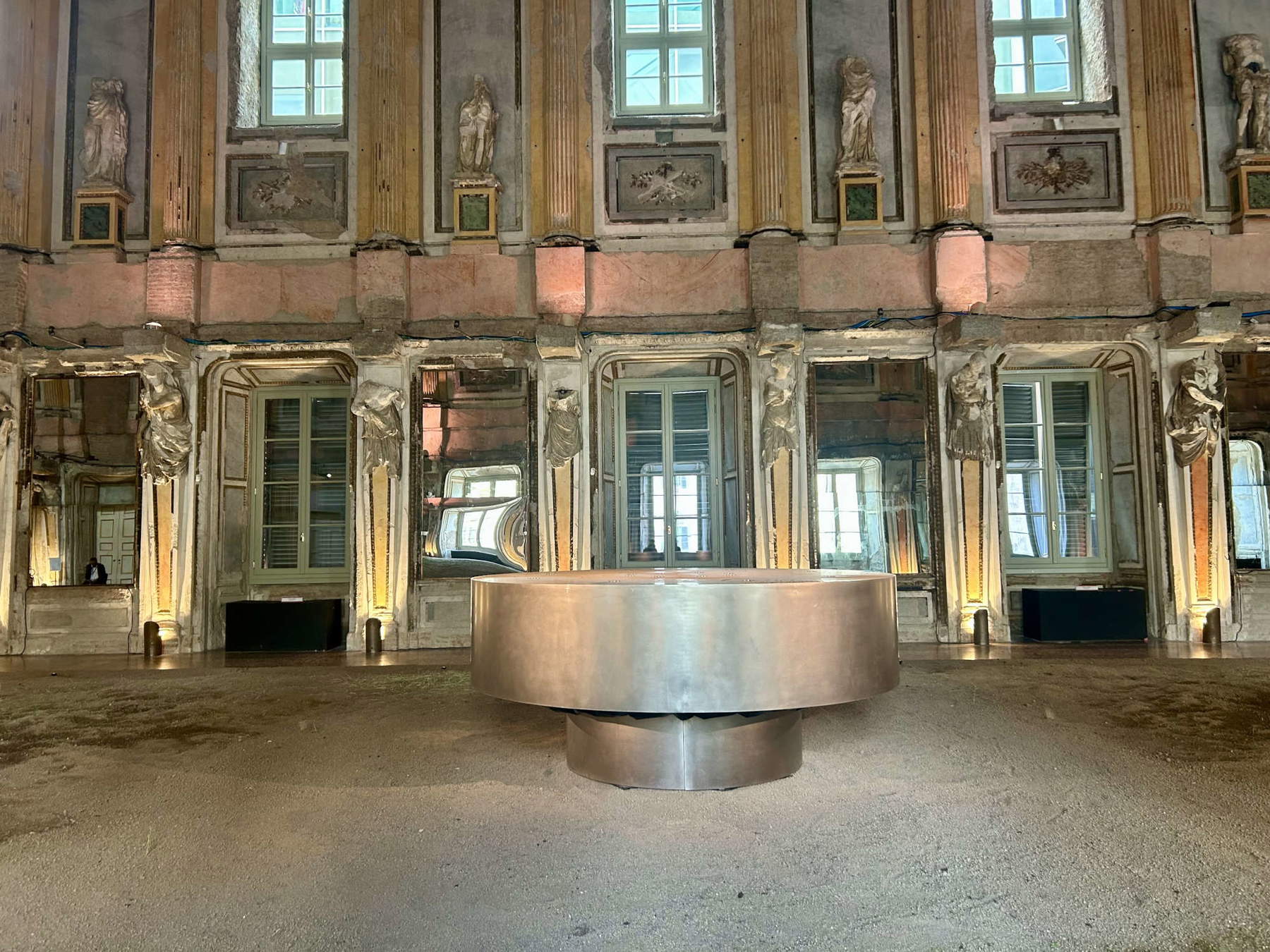
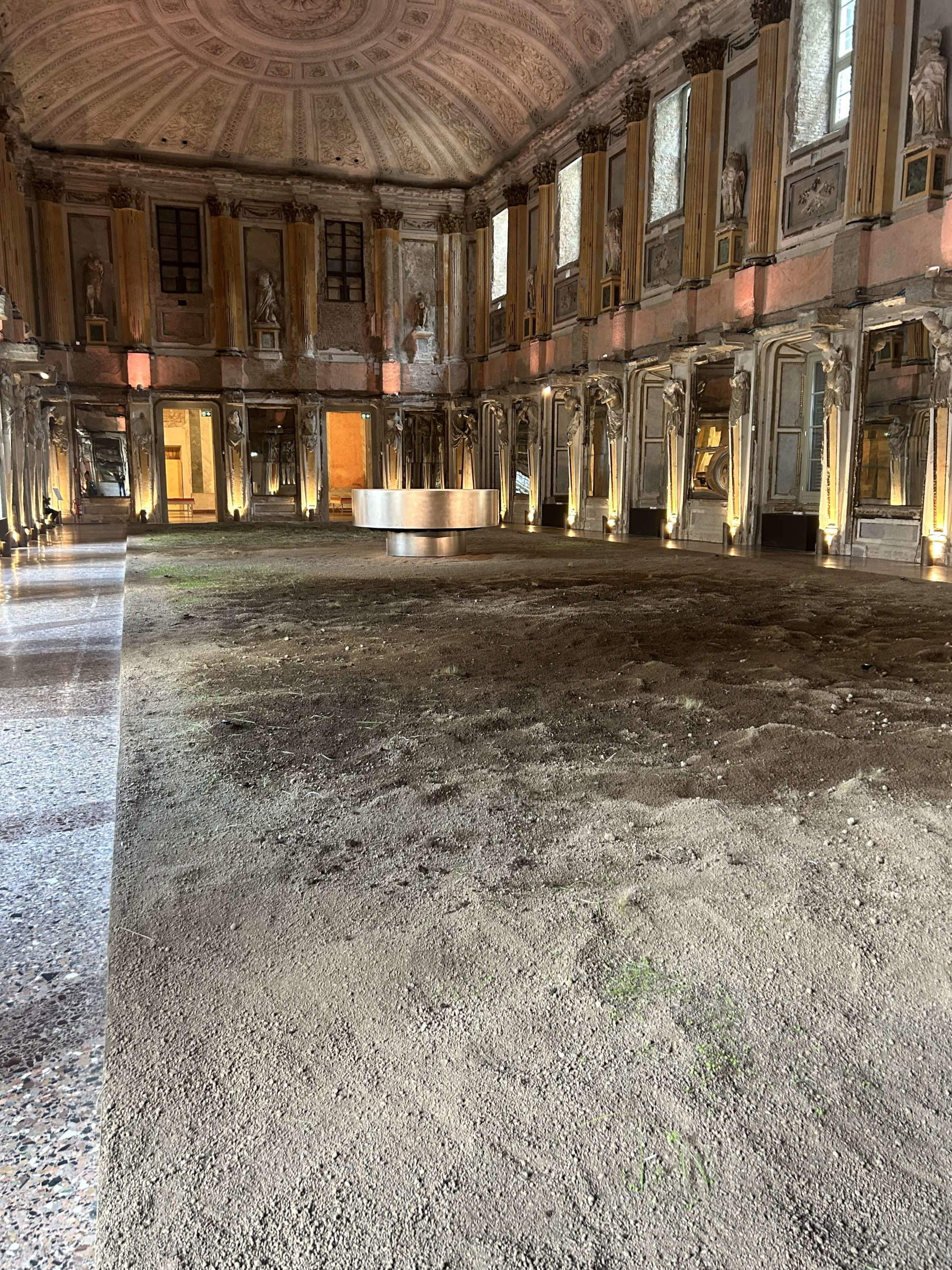
Pastorale then does not even stand as a constructive gesture. Compare it, for example, with the operation of Mexican artist Juan Pablo Macías, who in 2014 gave birth in the Abruzzi village of Guilmi to BAS - Banca Autonoma di Sementi Liberi da Usura, an anarchic project, which promotes the exchange of ancient seeds - not manipulated by the chemical industry and not subject to programmed obsolescence - to show farmers that yes, there are forms of concrete resistance to the domination of predatory capitalism. Along with the seeds they also exchanged knowledge, time, relationships. An art that became action, encounter, politics from below.
Quite different from operations like Pastoral, which merely touch on major contemporary traumas: war, ecology, social injustices, without daring any proposal, without building any real reflection. In doing so, they become just a convenient exercise for jaded well-wishers, an ideological balm for lukewarm souls. In the words of Roth’s American Pastoral, “It is indisputable that, in life, there is nothing more relieving than a burst of legitimate indignation.”
To talk about war, social injustice, economic inequality or environmental crisis without ever really taking a risk, without ever getting one’s hands dirty, is to participate in that form of engaged entertainment that the art system likes so much today. An empty rhetoric that consoles those who can afford the luxury of indignation from afar, of feeling less guilty, of convincing themselves - effortlessly - that they are doing their part. And in the face of these costly shams disguised as civic engagement, so reassuring, so perfectly aligned with the most shared and never uncomfortable opinions, it comes naturally to shout the accusation that in Roth’s novel is levelled at Seymour Levov, the protagonist incapable of genuine choice, always seeking consensus, always on the “right” side: “You hide. You never choose.”
Warning: the translation into English of the original Italian article was created using automatic tools. We undertake to review all articles, but we do not guarantee the total absence of inaccuracies in the translation due to the program. You can find the original by clicking on the ITA button. If you find any mistake,please contact us.